Shaping the future
Early on in the concept design for EPCOT Center, “Energy” was chosen as a natural pavilion topic. Even back then, designers conceived of a pavilion focused on alternative energy sources, pointing us toward the future. In particular, solar energy. According to the original plans, the Energy pavilion would’ve featured a massive, real solar collector at its center, with a complex trackless ride weaving around it.
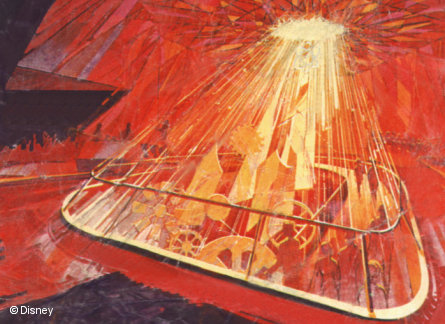
The massive solar collector might’ve been impressive, but it would also have been mostly decorative. In the early 1980s, solar power was a sincere avenue of exploratioin for the future, but it wasn’t quite advanced enough to generate the significant power needed for a pavilion, or the significant concept needed to fuel an attraction.
That was all well and good anyway, because Disney found a sponsor early on: Exxon.

The international oil and natural resources company was happy to foot the bill for a presence in EPCOT Center and for their input on a ride based on energy… and as you might imagine from an oil giant, they had a very specific idea of what kind of energy resources the pavilion should advertise…
Exxon encouraged Disney to develop an attraction with a broader point of view on energy, but a narrow focus on one particular resource: fossil fuels.
An attraction was developed that would take guests back in time to the age of the dinosaurs to understand the origin of the fossil fuels used today to power the world around us. Better yet, this attraction could take inspiration from the attraction Disney had developed for Ford at the real World’s Fair in 1964.
Construction began in late 1979 on the massive Universe of Energy pavilion, which would feature 105,000 square feet of space, all dedicated to a single attraction of the same name.
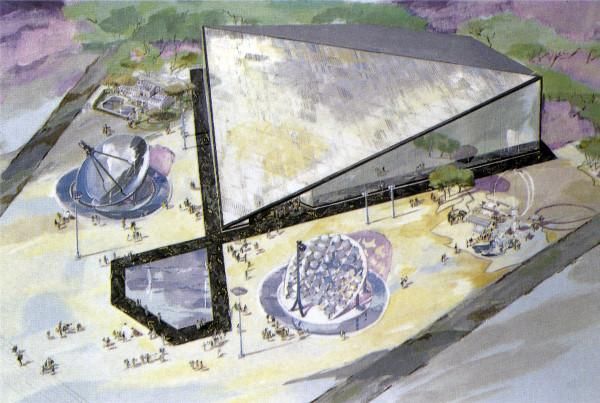
2,156 solar panels were placed on the roof. (Interestingly, in anticipation of the solar panels, Universe of Energy was the only pavilion whose location remained the same throughout all of EPCOT’s design.) Together and during peak sunshine conditions, those photovoltaic cells generate a combined 77 kilowatts of electricity (enough energy to light about 15 homes) that’s run directly into a substation beneath the pavilion. Converted to AC power, it’s then routed into a utility power grid and used to energize charging plates within the ride, powering up the attraction’s ride vehicles.
Universe of Energy was ready for the opening of EPCOT Center on October 1, 1982. Inside, guests would find an unusual attraction, and one of the most robust offerings in the park…
The Universe of Energy
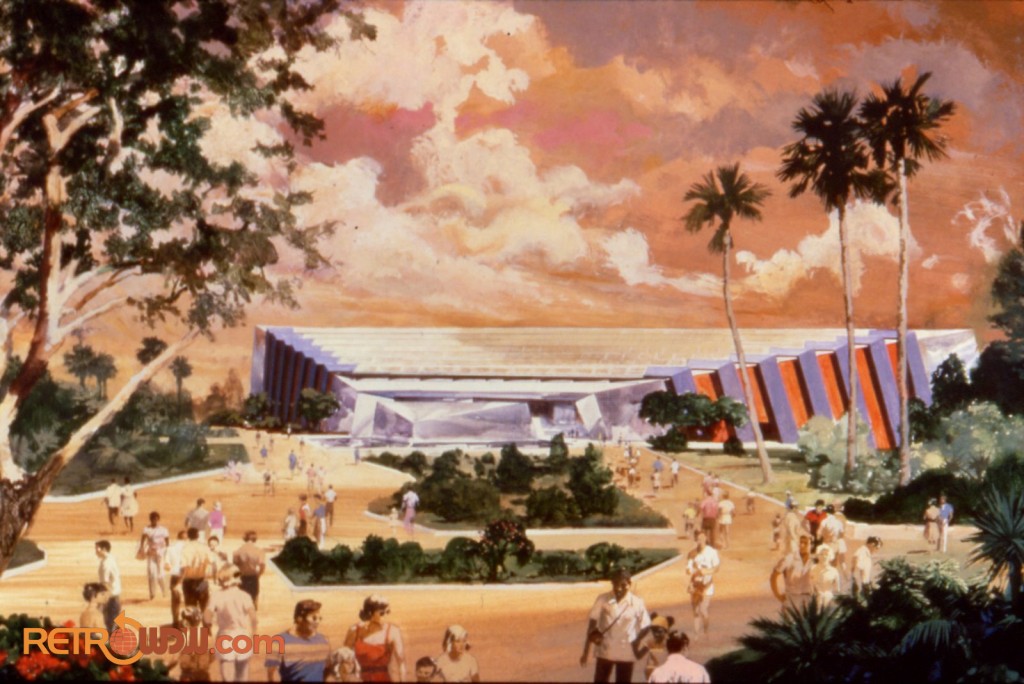
The unusual thing about Universe of Energy is just how involved the attraction is, with guests entering multiple theaters, dioramas, and stages en route.
Consider what guests encountered on the ride in 1982.
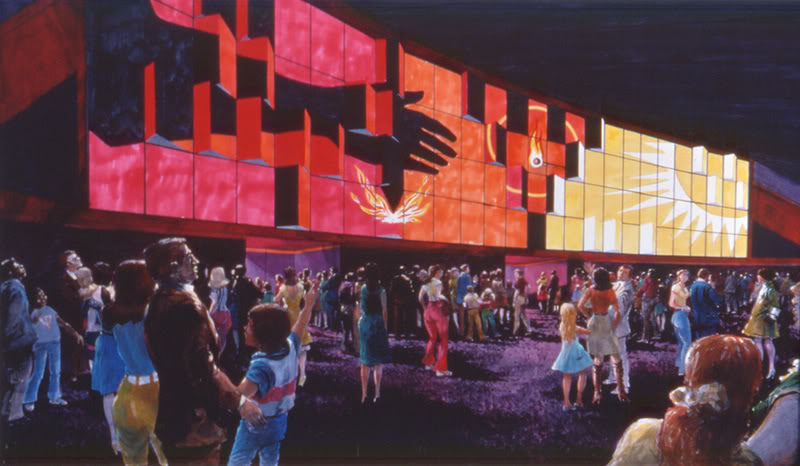
Just inside the pavilion’s black tiled exterior, they’d gather in a standing theater to view a sort of pre-show to explain the origins of energy. However, this unique presentation was known as the “Kinetic Mosaic,” projected on a series of 100 prism-shaped screens that could rotate under the control of a computer.
Arranged in a 4 x 25 grid, these panels featured two white screen sides and a third matte black, allowing them to rotate into view and “disappear.” The unusual, undulating movement of these tiled screens (synchronized with the footage projected) gave an unusual, three-dimensional quality to the film.
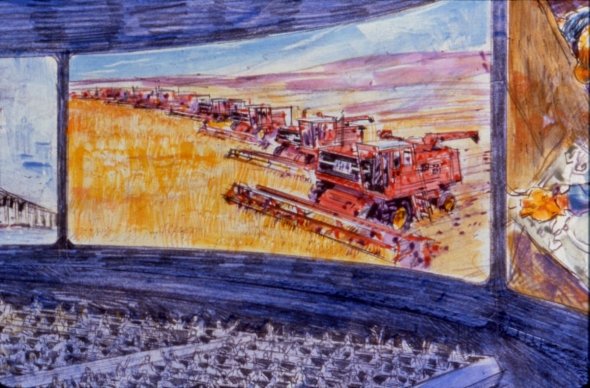
Moving onward, guests would be seated in a 600-person theater to view an animated film recalling the origins of life on Earth, the extinction of the dinosaurs, and the creation of fossil fuel – compacted organic matter pressurized for millions of years.
As EPCOT Center goes, this educational, scientific “travelogue” will feel familiar. But then, something quite unfamiliar happens… Unbeknownst to guests, the “theater” they’re sitting in isn’t really a theater at all. The massive arrangement of guests is actually on wheels, positioned atop a gargantuan turntable… and as the film plays, these vehicles-in-disguise are being charged via contact plates, powered by the energy produced by the pavilion’s solar cells.
Amazingly, at the conclusion of this film, the enormous turntable would rotate and the “theater” would actually advance forward, separating into six ultra-wide passenger vehicles (holding 97 riders each!) (see Passholder-exclusive schematic above). The “trackless” vehicles would advanced off of the turntable (following a wire embedded in the ground) with their batteries charged enough to propel them into and through an enormous prehistoric diorama to view the age when our fossil fuels were formed.
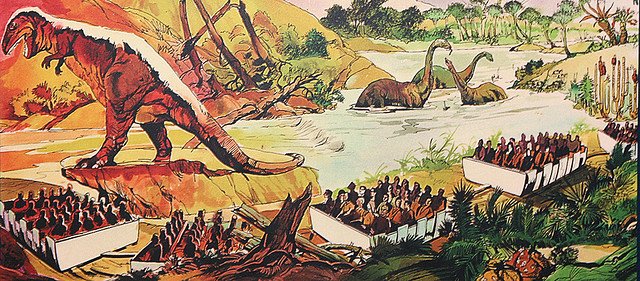
Afterward, the vehicles would advance into a third massive theater to view the ride’s longest portion: a live-action film about current and future energy sources. Then, the vehicles would return to the first theater, reassembling into an audience for an uplifting and distinctly ‘80s finale. A computer-animated film of laser-like images were projected around the room, reflecting from mirrors revealed from behind curtains.
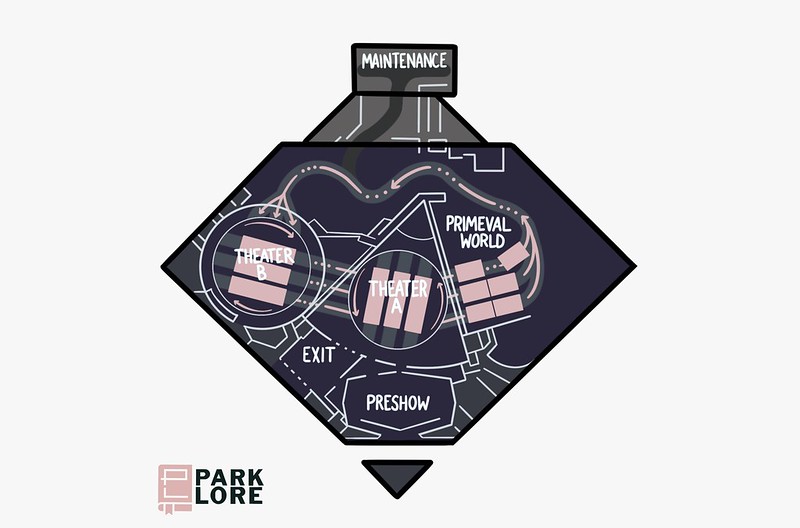
This uplifting finale brought the 45-minute experience to a close, creating an amazing opening-day dark ride and showcase of ’80s style perfectly at home with fellow Lost Legends: World of Motion, Journey into Imagination, and Horizons. It may have been a long ride, but it didn’t last long.
The Nineties
In the 1990s, everything was changing at Walt Disney World.
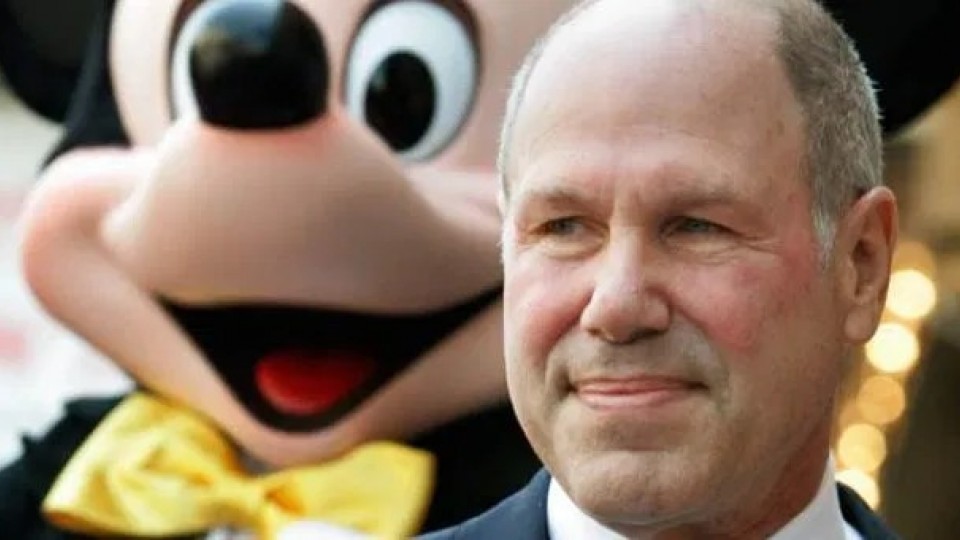
Under the leadership of new CEO Michael Eisner, Disney Parks were destined to become cool, hip places where guests could “ride the movies!” Eisner must’ve been particularly embarrassed by the pop culture pun that EPCOT Center had become – the park kids dreaded spending a day at.
Meanwhile, the decade-long sponsorship agreements signed by many of EPCOT Center’s original financing corporations were coming up for renewal. It was in the early – mid 1990s that Disney counted on these corporations to fulfill their obligations and pay big bucks to overhaul and update Future World’s pavilions. Instead, many were on the fence, and others were leaving.
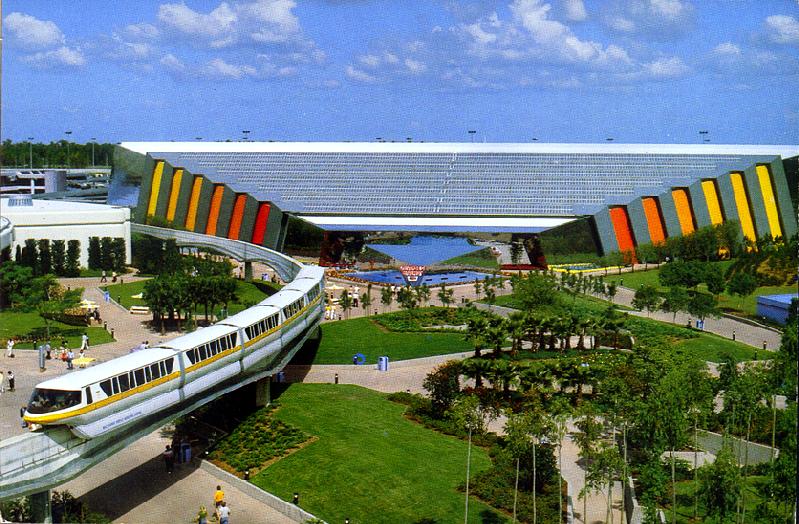
A series of refreshes and rebranding would soon get underway, and Universe of Energy was one of the first in need of it. Perhaps more than any other pavilion’s topic, “energy” was an area of great interest to the scientific community, and a lot had changed in the decade since the ride’s opening. Not to mention, the pavilion’s tone was a step more self-serious than any of the park’s other pavilions – a quality guests seemed to dislike. (Other park classics like World of Motion, Wonders of Life, Journey into Imagination, and a fellow Lost Legend: Kitchen Kabaret tended to get the point across without being preachy or self-important.)
Exxon was on board to extend its sponsorship, but the company wanted assurances that the ride would be updated and refreshed to continue to draw in more guests.
Crisis
Imagineers pitched a new concept to Exxon.

Disney was in the process of buying the American Broadcasting Company (ABC) television network… all a part of Michael Eisner’s master plan to transform Walt Disney Productions into the Walt Disney Company – the international media conglomerate we know today. As part of Disney’s acquisition of ABC, they’d gain access to a whole new group of television shows and stars to use in the parks, and one of those new connections was to comedian Ellen Degeneres, star of ABC’s hit primetime sitcom Ellen.
With Ellen on board, Disney hoped to lighten the pavilion’s tone, reusing its infrastructure to craft a more friendly way to learn about energy resources. Universe of Energy closed on January 20, 1996. Ellen’s Energy Crisis was meant to be ready after a simple 5-month closure of the pavilion, but problems with the new filming and editing of the attraction forced Disney’s hand and they announced that the new ride would not be ready for summer 1996 as planned.
That created a serious problem on the west side of the park.
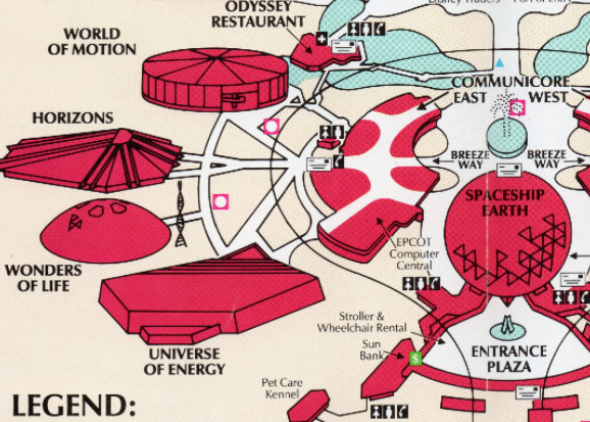
World of Motion was already closed to begin its multi-year transformation into the fast-paced Lost Legend: TEST TRACK, and the king of all of EPCOT’s Lost Legends: Horizons was shuttered en route to its final closure and replacement by Mission: SPACE. With Universe of Energy down, too, only the Wonders of Life pavilion (and its Lost Legend: Body Wars) would be open on the west side of Future World.

Thinking quickly, Disney decided to re-open Universe of Energy mid-redesign, offering a hybrid of the old and new attraction. The Kinetic Motion screens from the preshow were gone, but the new Ellen-featured film wasn’t ready, meaning the old preshow was projected onto the new, standard screen. Audio was edited in the ride theaters to avoid mentioning the projections no longer featured, and in the finale, the projections lost their luster without the mirrors that amplified them.
Most hilariously, a new Audio Animatronics figure of Ellen Degeneres was hidden when Imagineers simply placed temporary rockwork in front of it, with a dinosaur lunging toward the rock.
As soon as the summer season was over, Disney shut the pavilion again and continued work in earnest. Given that Exxon objected to the use of the word “Cris” in the proposed attraction name, when Universe of Energy was finally ready for primetime on September 15, 1996, is was called Ellen’s Energy Adventure . This is where many readers will begin to recognize the ride we’ve lost… Read on…




